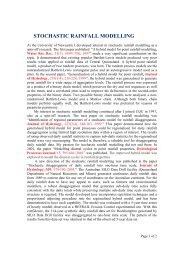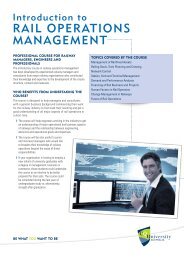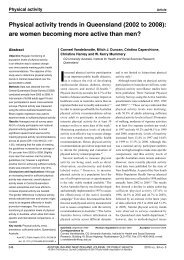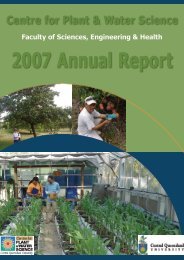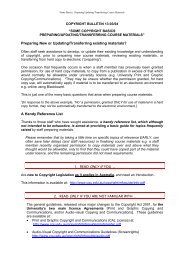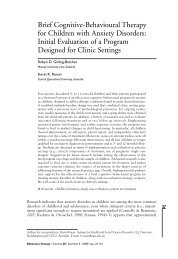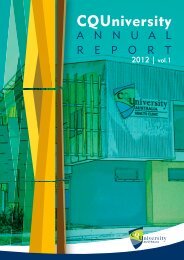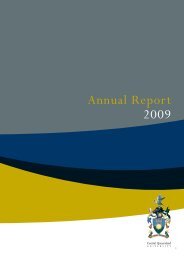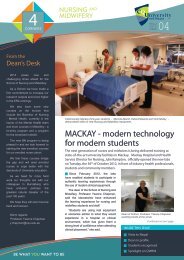Health, Safety and Environment Induction Handbook for Contractors
Health, Safety and Environment Induction Handbook for Contractors
Health, Safety and Environment Induction Handbook for Contractors
You also want an ePaper? Increase the reach of your titles
YUMPU automatically turns print PDFs into web optimized ePapers that Google loves.
33 Waste Management<br />
The University strongly encourages <strong>Contractors</strong> to identify waste minimisation options at the start of each<br />
job. These include:<br />
• working out costs <strong>and</strong> savings involved in minimising waste;<br />
• taking care not to over-order;<br />
• ensuring that subcontractors are responsible <strong>for</strong> their waste;<br />
• utilising off-cuts;<br />
• recycling materials where practicable;<br />
• buying materials with minimal packaging;<br />
• require suppliers to accept their packaging back.<br />
There are many opportunities <strong>for</strong> waste to be reduced. No-one will be better than you <strong>and</strong> your team to<br />
find waste solutions. Whatever the waste, it is probable that someone in the community could use it. At<br />
most work sites an industrial rubbish skip is required, but only <strong>for</strong> materials that cannot be re-used or<br />
recycled. Skips must have a lid so that rubbish doesn’t blow away, <strong>and</strong> rainwater doesn’t collect in the<br />
bin. Other factors include:<br />
• do not dispose of waste on University property;<br />
• do not use ordinary University rubbish bins <strong>for</strong> construction <strong>and</strong> demolition wastes;<br />
• you are legally responsible to ensure your waste is disposed of in the correct manner;<br />
• hazardous waste treatment <strong>and</strong> disposal must comply with <strong>Environment</strong>al Protection Authority<br />
Regulations.<br />
34 Hazardous Substances<br />
The Contractor must submit a Material <strong>Safety</strong> Data Sheet (MSDS) <strong>for</strong> all substances <strong>and</strong> a risk assessment<br />
of all hazardous substances to the CQUniversity Project Officer <strong>for</strong> each substance that is to be brought<br />
onto University grounds, <strong>and</strong> maintain a copy at the work site.<br />
All hazardous substances brought onto University grounds must be clearly labelled according to the<br />
legislation. Be sure to follow h<strong>and</strong>ling <strong>and</strong> storage instructions that appear on labels.<br />
Chemicals must be contained in reliable, tightly sealed containers. Containers must be stored indoors on<br />
an impervious floor, with enough bonding to hold any spill.<br />
Clean-up materials must be provided in case of spillage. Liquid spills can be mopped up by rags, sawdust,<br />
or commercially available absorbent products.<br />
The Contractor must ensure that clean up materials are appropriate <strong>for</strong> the chemicals used, <strong>and</strong> that at<br />
least one person on the site at any time is trained to clean up a spill. This includes always ensuring an<br />
adequate stock of clean-up material is available <strong>and</strong> easily accessible.<br />
Hazardous waste treatment <strong>and</strong> disposal must comply with <strong>Environment</strong>al Protection Authority<br />
Regulations.<br />
working doc - contractor h<strong>and</strong>book v3 17082009 final.docx Updated August 2009 Page 19





